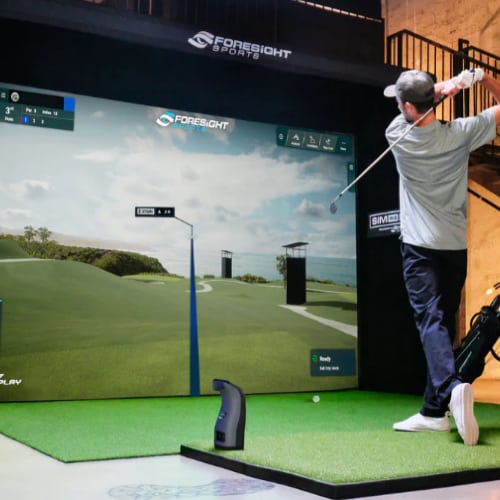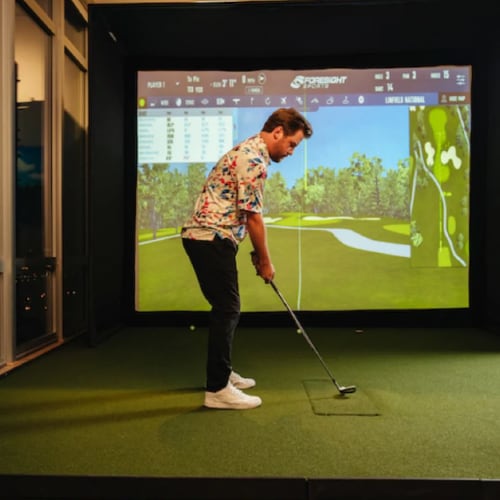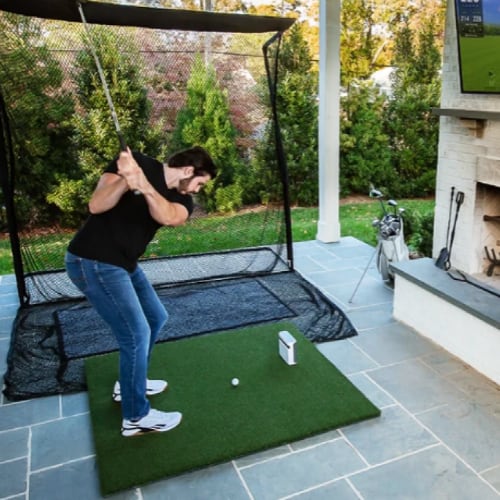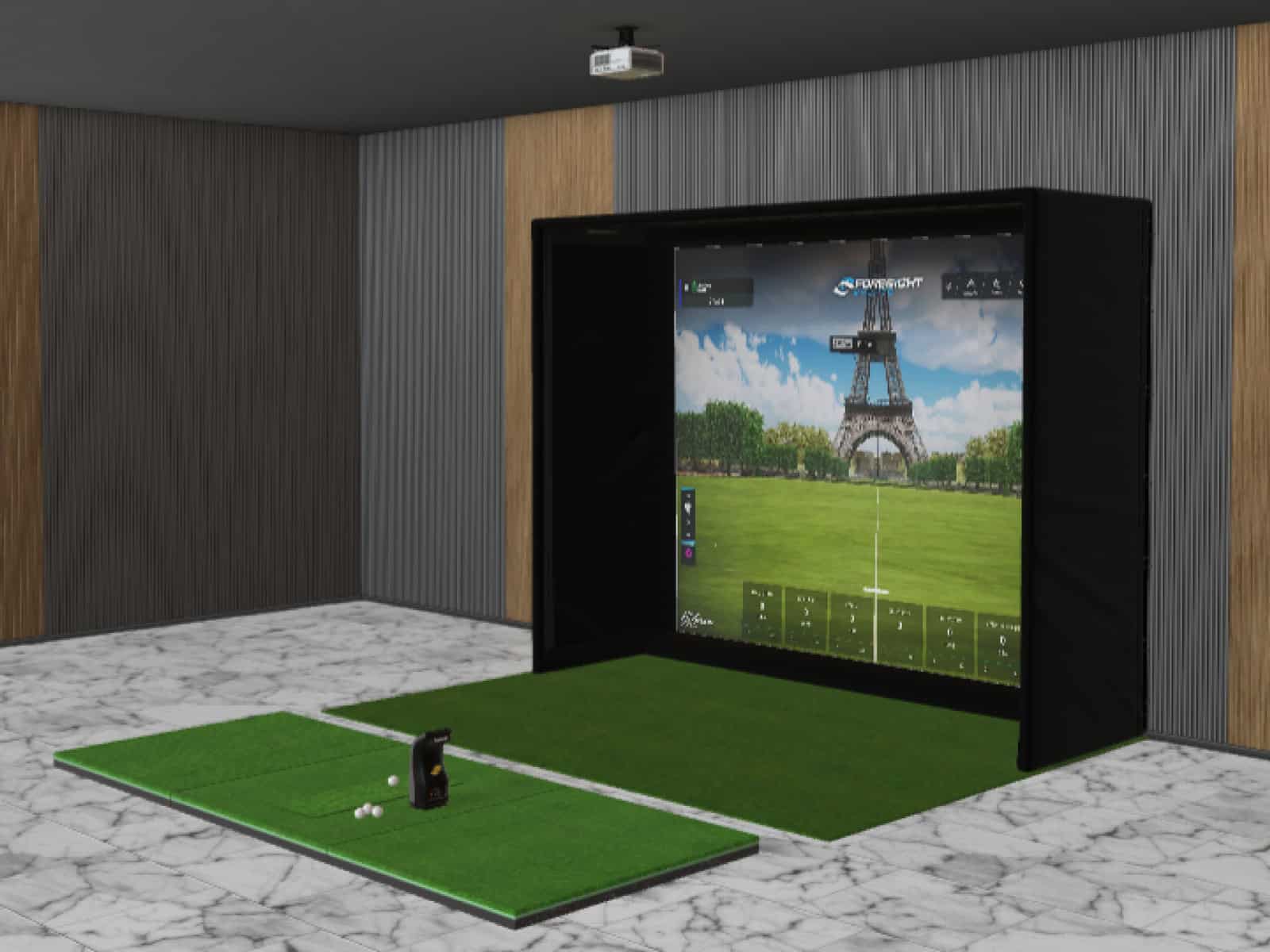With the rise of technology in sports, golf simulators have become increasingly popular among enthusiasts and professionals alike. These sophisticated tools promise a realistic golfing experience from the comfort of one’s home or office.
The appeal of golf simulators lies in their promise to replicate the real-world experience. With state-of-the-art graphics and precise data analytics, these machines have become a staple in many homes and training centers.
However, as with any simulation, there are bound to be differences. The question that arises is: how close do golf simulators come to mimicking the actual experience of playing golf?
This quick guide delves deep into the world of golf simulators, comparing them with the actual experience of playing on a real course.
The Feel of Golf Simulators
The essence of golf lies in its ‘feel’. It’s the intangible connection between the player, the club, and the ball.

In real golf, this feel is influenced by numerous factors, including the contour of the hole, the lie of the ball, and other environmental elements.
In a simulator, replicating this feel becomes a challenge. While the graphics and sound effects can be incredibly realistic, the tactile feedback is inherently different.
For instance, when a player looks out at their target on a real course, they get a certain ‘feel’ for how they should swing. This sensation, influenced by the environment, is hard to replicate indoors, regardless of how advanced the simulator is.
Still, with the latest technological advancements, the feel of sims has come really close to reality, with 4k resolutions and (sometimes) curved screens that make the experience more realistic and immersive. Modern hitting mats also provide a real-life-like feel, similar to that of actual grass. So, while playing on a modern sim doesn’t offer the same feel of being on the course, it has really come close to it.
We believe the next big thing will be virtual reality (VR) and augmented reality (AR) simulators that will bring virtual golf even closer to reality.
Technical Aspects
One of the most noticeable differences between a simulator and a real game is in the technical aspects of play.

In putting and chipping, for example, players often rely on depth perception to judge distances. In a simulator, this depth perception is virtual, making it challenging to get a genuine feel for how hard one needs to hit the ball.
Environmental factors, such as wind, play a significant role in real golf. In a simulator, while these conditions can be simulated, they don’t affect the player’s swing in the same way.
Another technical difference lies in the lie variability. On a real course, terrains vary, offering different challenges. In contrast, a simulator provides a consistent flat lie, making it hard to simulate conditions like rough terrains or bunkers. Some manufacturers tried to mend this by providing hitting mats with different parts mimicking what you’d find on a course; others, like Golfzon, took innovation a step further and created a package with advanced actuators that change the lie angle of the hitting mat and make it as close to the real thing as possible.
Check Also: Are Golf Simulators Easier Than Real Golf? Breaking It Down
One thing in common between those innovative packages is that they are extremely pricey because of the cutting-edge technology employed in making them, so they are reserved for the very few lucky ones.
Advantages of Golf Simulators

Despite the differences, simulators offer several advantages.
The most evident is the time of play. Without the need to walk between holes or wait for other players, rounds on a simulator are significantly faster.
Additionally, simulators provide instant feedback with detailed shot data, aiding in game improvement. You can also enjoy the luxury of playing any time, regardless of weather conditions or time of the day.
Furthermore, simulators offer a variety of courses, allowing you to experience world-renowned courses without leaving your home.
If you’re interested in exploring the best options available, check out our article on the best golf simulator for the money.
Data Comparison: Simulator vs Reality
When comparing data between virtual golf and real golf, the results can be surprisingly close.
For instance, scores, strokes, and other metrics often show minimal differences between the two. This closeness in data underscores the accuracy and realism of modern simulators.
However, it’s essential to note that while the numbers might be similar, the experiences can differ, especially when considering factors like weather conditions and terrain.
You May Also Like: 10 Most Accurate Golf Simulators – Reviews & Buying Guide
Specific Challenges and Differences
Several challenges are unique to simulators. For instance, while real golf might be affected by strong winds or rain, these variables are absent in a simulator unless artificially introduced.
The perfect lie provided by simulators can also make the game easier, as players don’t have to contend with rough terrains or bunkers.
Another difference lies in the distances of shots.
In simulators, drives might roll more due to the virtual nature of the terrain, leading to shorter distances to the hole. On the other hand, real golf presents its own set of challenges, such as the need for depth perception in short-range shots and the intricacies of putting on real greens.
Practice and Improvement
Golf simulators shine when it comes to practice and improvement.

The controlled environment allows you to focus on specific shots, conditions, or courses. The immediate feedback and data analytics provided by simulators can be invaluable for those looking to hone their skills. Players can practice shots from specific areas, work on their swing mechanics, and even simulate challenging conditions to better prepare for real-world scenarios.
Check Also: What Should You Wear to an Indoor Golf Simulator Facility?
Conclusion
While golf simulators offer a plethora of benefits and come close to replicating the real golfing experience, they are not perfect substitutes.
The tactile feel, environmental challenges, and unpredictability of real golf are hard to mimic entirely in a virtual setting. However, for practice, convenience, and entertainment, golf simulators are unparalleled. They provide a unique blend of realism and convenience, making them a great tool for both enthusiasts and professionals.
Thanks for reading!





